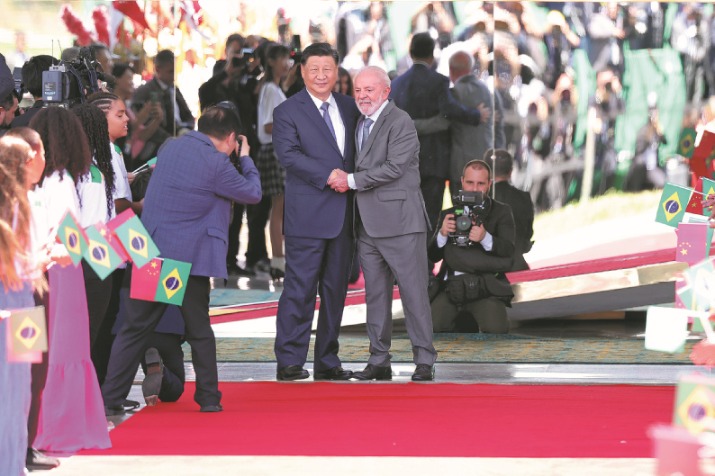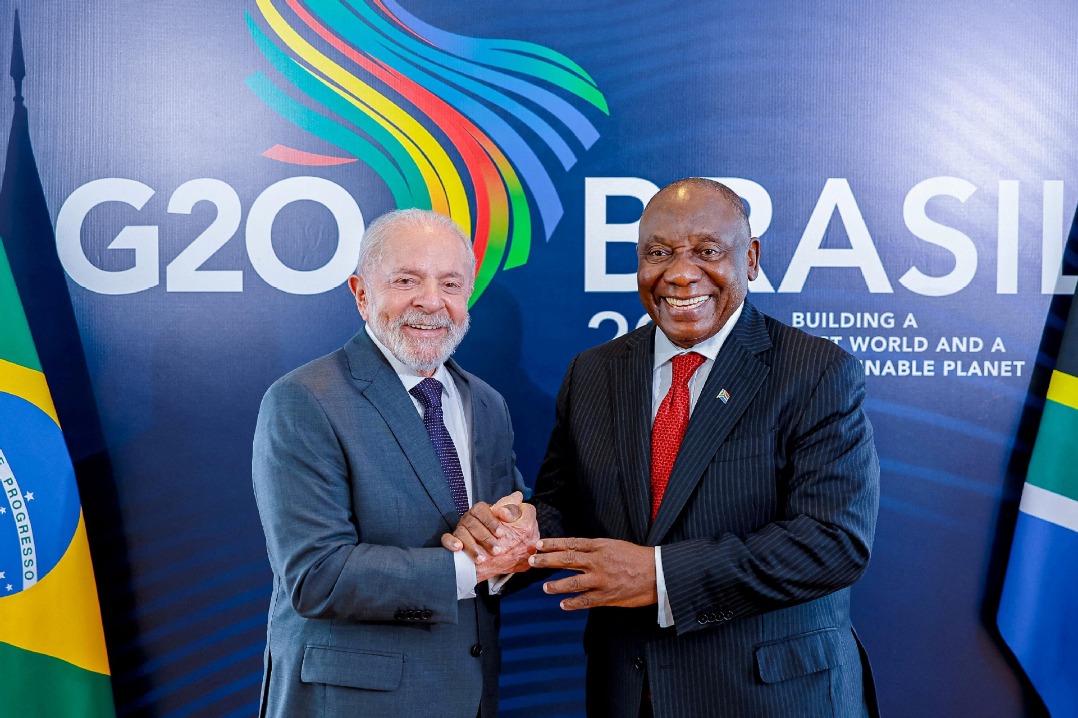Cut dollar's hegemony by moving away from greenback
By Vox South | chinadaily.com.cn | Updated: 2024-07-01 09:15

"The dollar is our currency, but it is your problem."
--John Connelly, US treasury secretary, 1971
Since the 1970s, nearly 200 financial crises, big and small, have erupted globally, largely triggered by the tide of the US dollar. The latest episode happened during the past five years, something we all experienced firsthand.
When COVID-19 struck in 2020, countries were forced to impose lockdowns, which led to a halt in economic activities. The US was no exception. However, to appease its people and businesses, the US government adopted the handout policy, giving each household thousands of dollars in cash. Where did the money come from? Well, they printed it. From 2020 to 2021 alone, the amount of new cash printed and injected by the US government into the economy was nearly half of all dollars that were ever in circulation in US history. This flood of funds flowed into the US stock market, sending the stock soaring and attracting international capital, particularly from the Global South countries, into the US. The US economy, as a result, grew at a record rate in 2021, the highest since 1984. The surplus dollars that could not be absorbed by the American stock market flowed out of the country again, causing severe financial volatility and disrupting the exchange rates of other currencies against the US dollar.
Many Global South countries, already grappling with low foreign exchange reserves, were forced to follow suit with the US to print more money and lower interest rates. However, such moves unfortunately led to the depreciation of their own currencies, high inflation and economic recession, further reducing people's already dwindled assets. The US, to satisfy its own economic needs, abused its position as issuer of the world's reserve currency. By over-issuing dollars, the US shifted its crisis onto other countries. While it remained unaffected, other countries, especially those of the Global South, had to bear the brunt.
When the pandemic was over, countries rushed to stimulate economic recovery and tackle rising inflation triggered by money printing. The US was no exception. Once again, the US, ignoring the impact on other countries, raised federal funds rate 11 times in a short span of over one year from 0 percent to 5.5 percent, attracting an in-flow of more than $10 trillion to the US and creating a dire shortage of dollars among the Global South countries. Such sudden outflows of capital left many Global South countries with a capital crunch and dim prospects for economic recovery. Moreover, the international financing cost went higher, making it more expensive to repay dollar-denominated debt accumulated during the pandemic.
According to the IMF, this round of rate hikes by the US Federal Reserve left at least 33 Global South countries with a high-level of debt, the negative impact of which may linger on for well over another two years. Faced with debt distress and dollar appreciation, these countries had to sell off more assets to repay dollar-denominated debts, and buy raw materials, food and other necessities with larger amount of their local currencies. Some of the countries subsequently suffered from debt default, economic bankruptcy, and social turmoil.
What made things worse was that the US-dominated international institutions such as the IMF seized the chance to harvest the Global South again, by attaching harsher conditions to the aid packages in an attempt to hold greater political and economic sway over them. The US monopoly capital, secretly pleased at the plunging price of assets in these countries, wasted no time in snatching up their assets, making them more dependent on the US.
In fact, no country, be it members of the Global South or American allies and partners, is spared the tidal effect of the US dollar. Look at Japan's "lost 30 years", the 2008 European debt crisis, the Euro's dilemma since the Russia-Ukraine conflict in 2022, and the recent wave of currency depreciation in Asia such as Japanese yen and South Korean won. They all lay it bare once again that greenback's hegemony only serves American interests.
That being said, American interests are not the same as American people's interests. Instead, they are probably interests of only a handful of financial monopolies. According to the US Federal Reserve, in 2021, the richest 1 percent American households owned a record 32.3 percent of the country's total wealth, up from 23.6 percent in 1989. In contrast, the poorest 50 percent American households, or roughly 63 million in total, only had 2.6 percent, down from 3.7 percent in 1989.
Debt of the US government has hit a historic high of over $34 trillion, 12 times the total GDP of all African countries. In 2024, the interest payments of American national debt will be over US$1 trillion, equivalent to the GDP of Brazil and Mexico combined. Such debt is like a sword of Damocles, hanging over the people of the US and the world. Are we really going to put up with this? As President Lula da Silva of Brazil put it, "I know you all got used to using US dollars. But in the 21st century, we can try something different."
The author is a Beijing-based international affairs commentator.
























